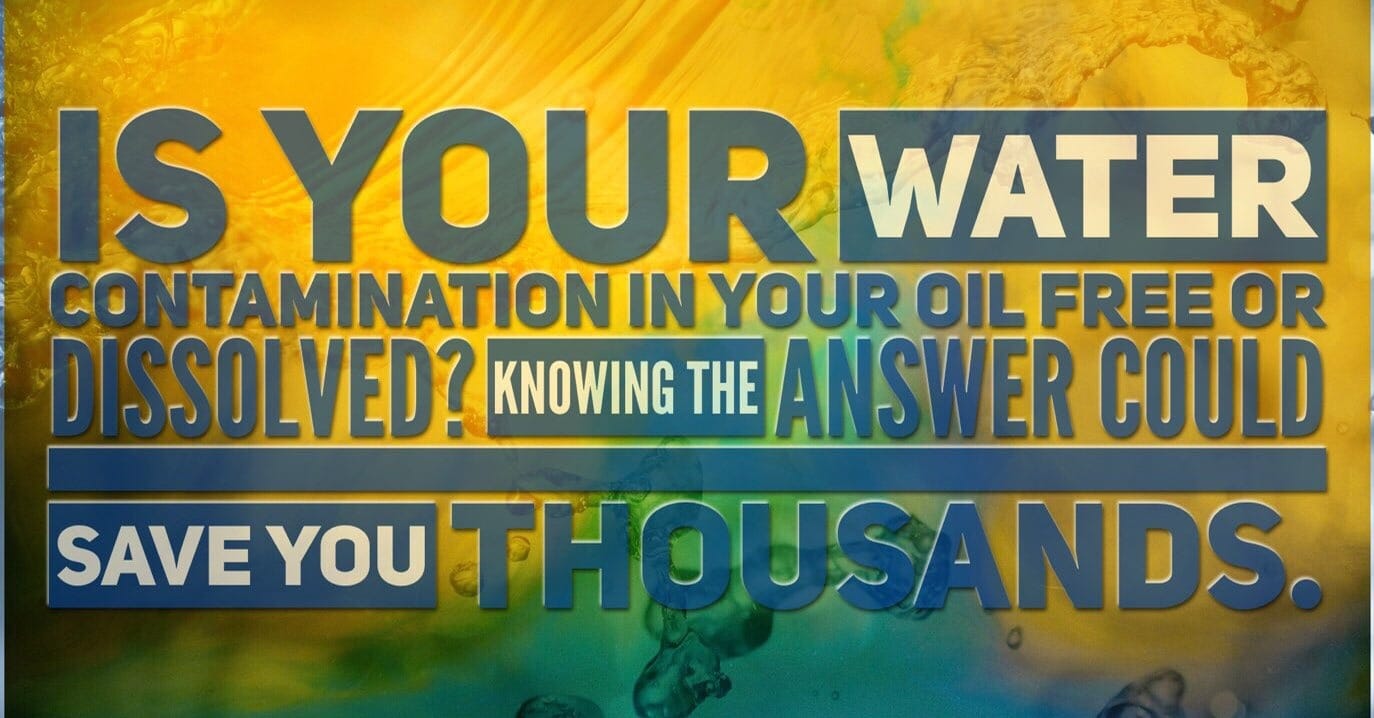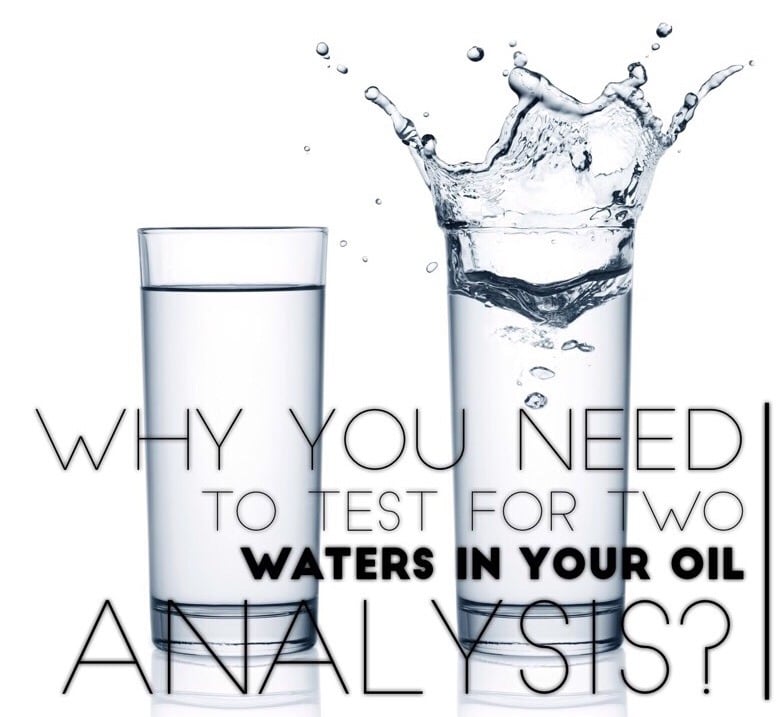This article will answer the following questions?:
-
How water H2O is measured in lubricating oil samples?
-
The difference between ppm water and percent (%) water.
-
The difference between free water and dissolved water and their effects on machinery.
- Why water results in oil samples can vary depending on the method?
For many years the two most commonly used tests for determining water contamination in lube oils have been the crackle test and water by Karl Fischer (KF) titration.
In fact these tests have become so engrained as the default tests for water that I would bet your last oil analysis had one of these two tests performed regardless of where you are or what lab you use.
The way the data is presented to you is either in a percent, ppm or mg/kg figure for KF and usually a <0.1% or 0.1%> value for the crackle test.
Many labs do a combination of techniques such as screen by crackle or FTIR and then test by KF, Dean and Stark or Calcium Hydride, or simply run KF on every sample.
The reason for the variety of methods but the crux of any testing revolving around KF and crackle is the limitations of each method. Some tests like crackle are excellent for finding free water, whilst others like KF are exceptionally accurate at measuring dissolved water.

However, labs always express the data as just water. If you have low tolerances for water then you need ppm values for water on all your samples, so this means the crackle test is not good enough for screening the low level water. Usually less than 500 to 1000ppm (0.05% to 0.1%). KF by contrast is very accurate at low level concentrations down to single digit ppm values, but the methodology of testing makes it poor with free water. The reason for this is if we take a sample with free water and mix it really well, the water will have started to drop out of suspension before pipetting a small amount of sample into the vial for testing. Hence a Karl Fischer measurement of free water can never be representative of the bulk of the sample. The solution might be to use more sample and this is why tests such as the crackle test benefit from larger sample volumes. KF by contrast works on a titration principle so using a larger sample volume can slow the process speed per sample down as the large volume of water overwhelms the system, meaning it can take hours for each sample.
A few solutions to try get total water by KF have been attempted such as using ultrasonic baths or harmonic wands to mix samples before testing, but still with large volumes the water will always try to drop out of suspension.
For me I would say trying to suspend free water to measure by KF is a losing battle and instead I think we should adopt another approach to water content on oil sample reports. I have already started offering this as standard to all my clients and had very promising feedback. The principle is to provide the customer with two waters. One by KF and the other by crackle followed by a percentage water method. This means a customer can have a result of 300ppm for water by KF, but 1500ppm (or 0.15%) by the other method. This at first glance seems like a serious problem with the lab data as surely they should be exactly the same? The answer is they are not supposed to be and this gives a great diagnostic tool we provide to clients. One result is looking at free/total water and the other at dissolved water.
This example above shows there is free water in the sample and probably globules of water collecting at the bottom of the sample. It also tells me the water should be removable by draining the bottom of storage tanks as it is shedding well from the lubricant and not easily emulsifying. In contrast a high KF as well would show a tendency to dissolved or emulsified water and a difficulty to remove, and on smaller volume systems perhaps an oil change might be simpler.
It is not just removal techniques this test combination can shed light on, but in how a machine wears too. Free water naturally settles to the bottom of a machine due to it being more dense than the lube oils (mineral ones at least). If you take a bearing for instance with free water in then it will collect at the bottom which is where the highest load is placed. So resolving free water is not only simpler to remove but also more critical to address urgently to prevent wear in these systems.
As you can see measuring water multiple ways to get both free and dissolved water is not duplicating work, but giving an excellent depiction of the conditions your machinery is really operating in.
If you would like to get more insight into identifying the type of water in your machinery and how to resolve it then click the contact button at the bottom right of this screen for more assistance.


